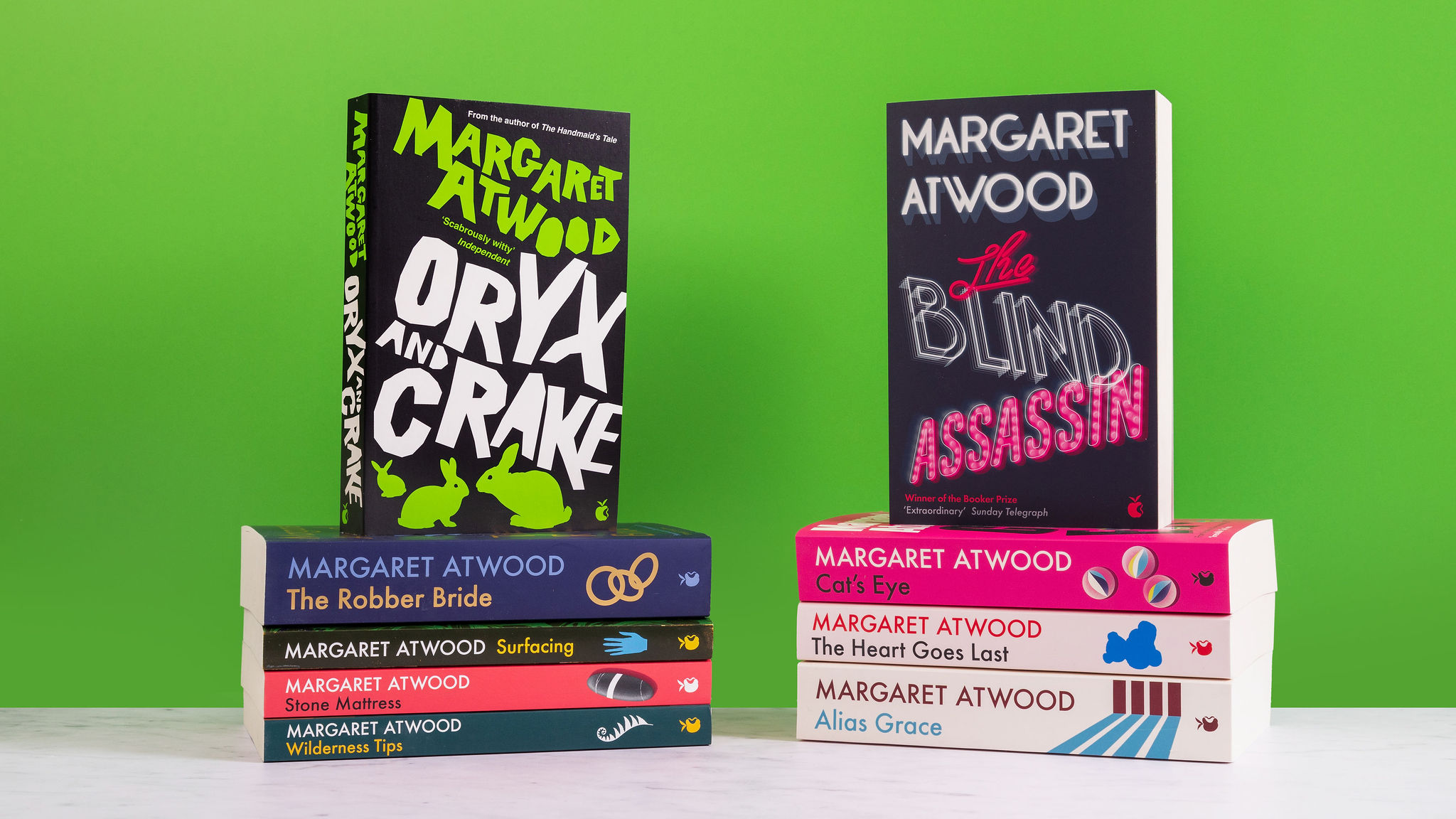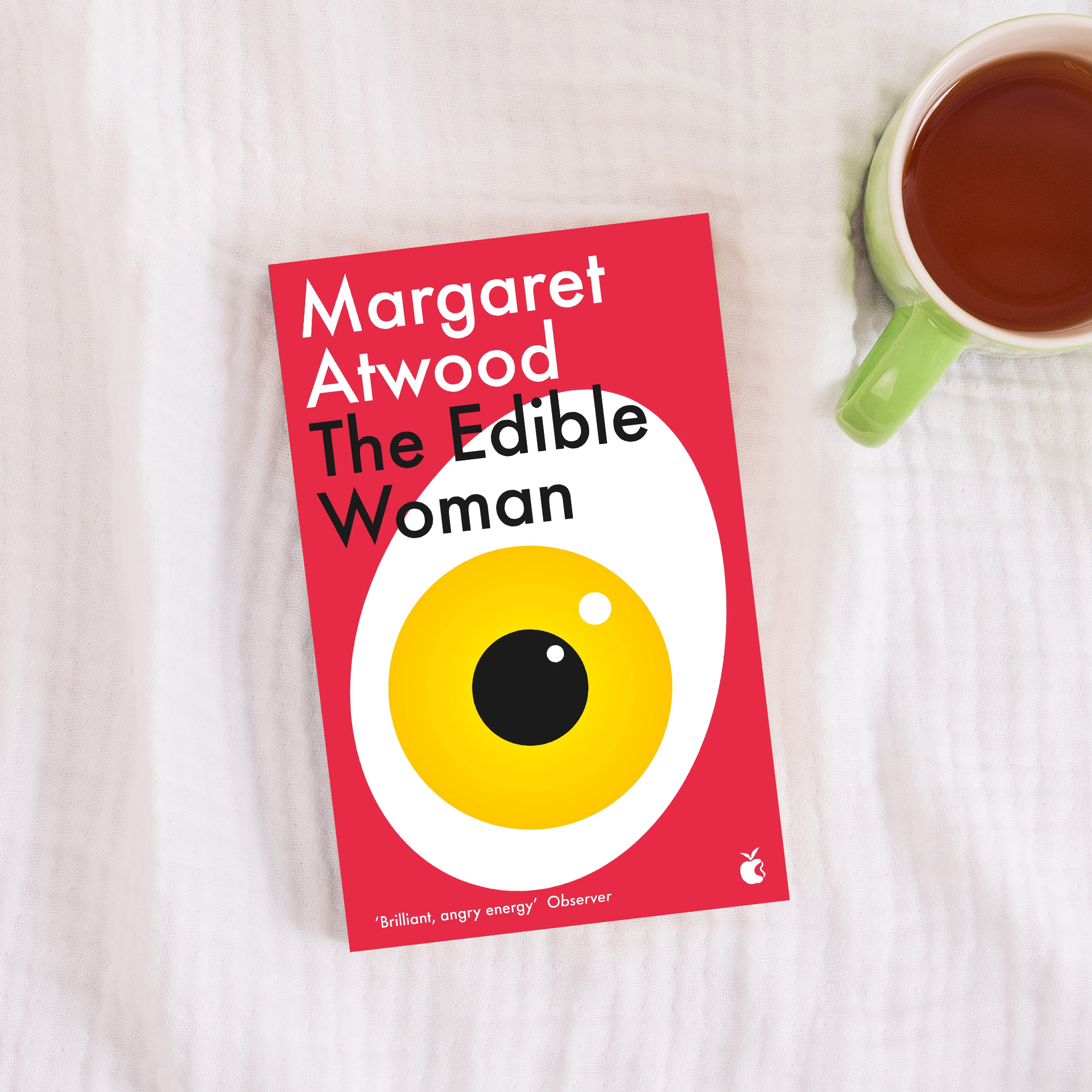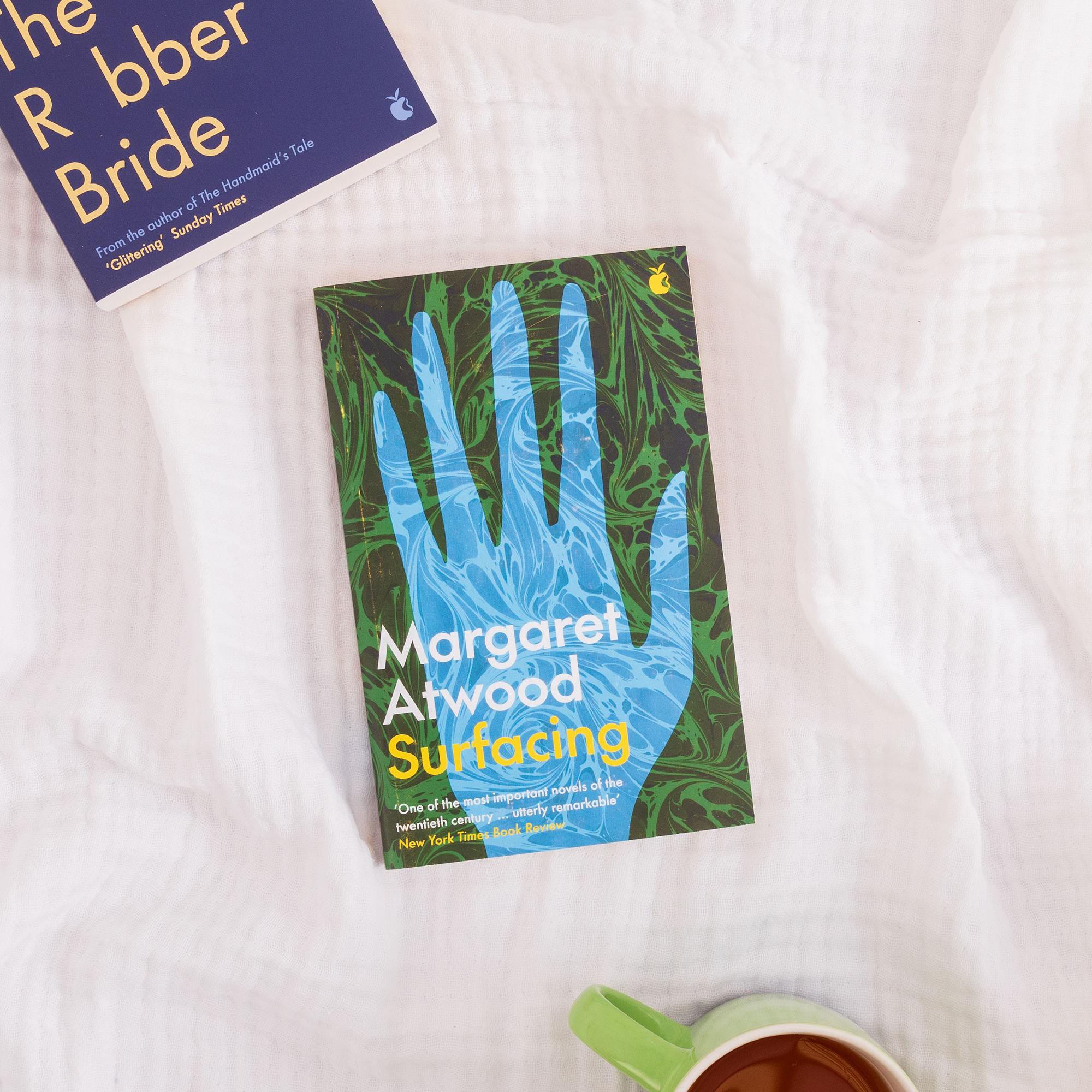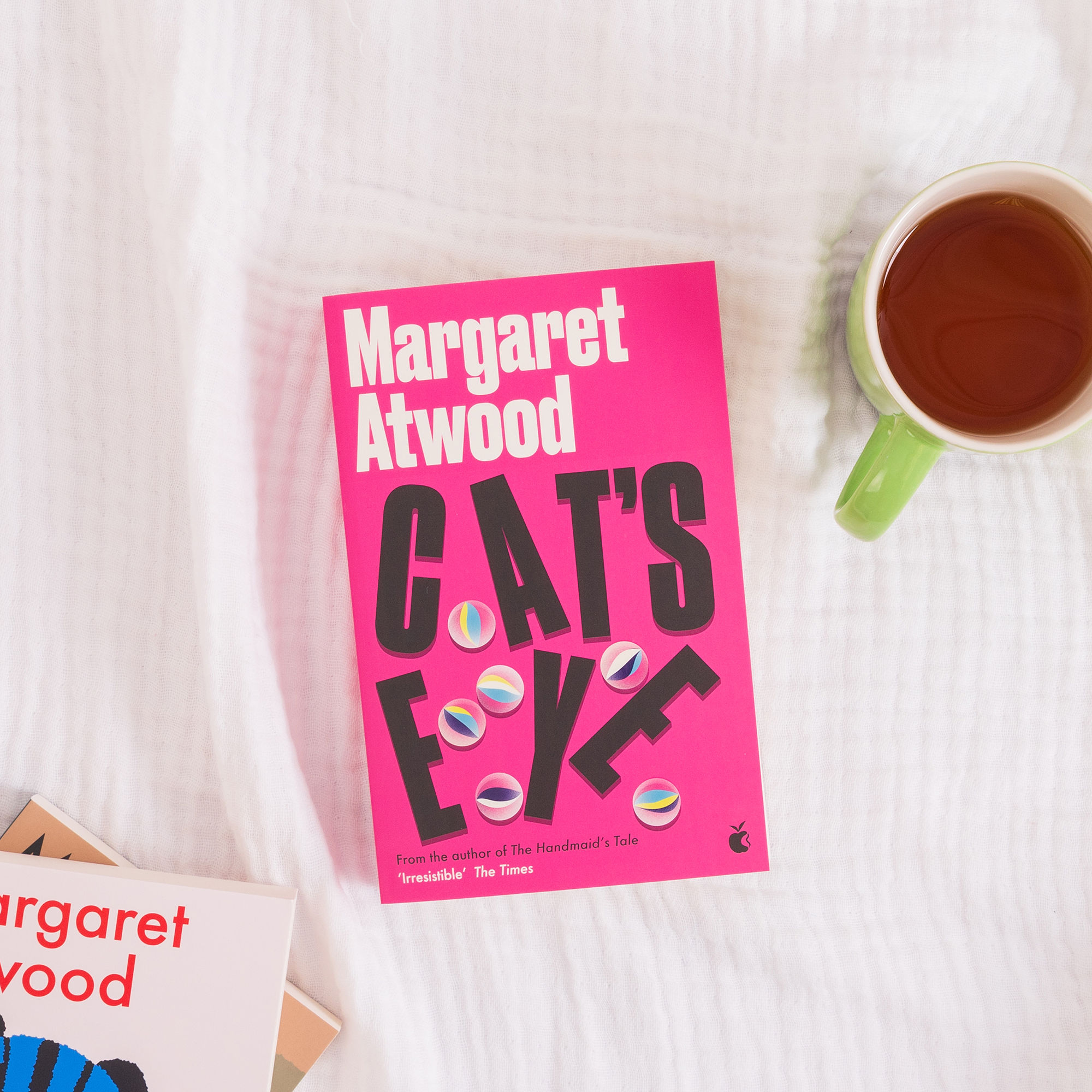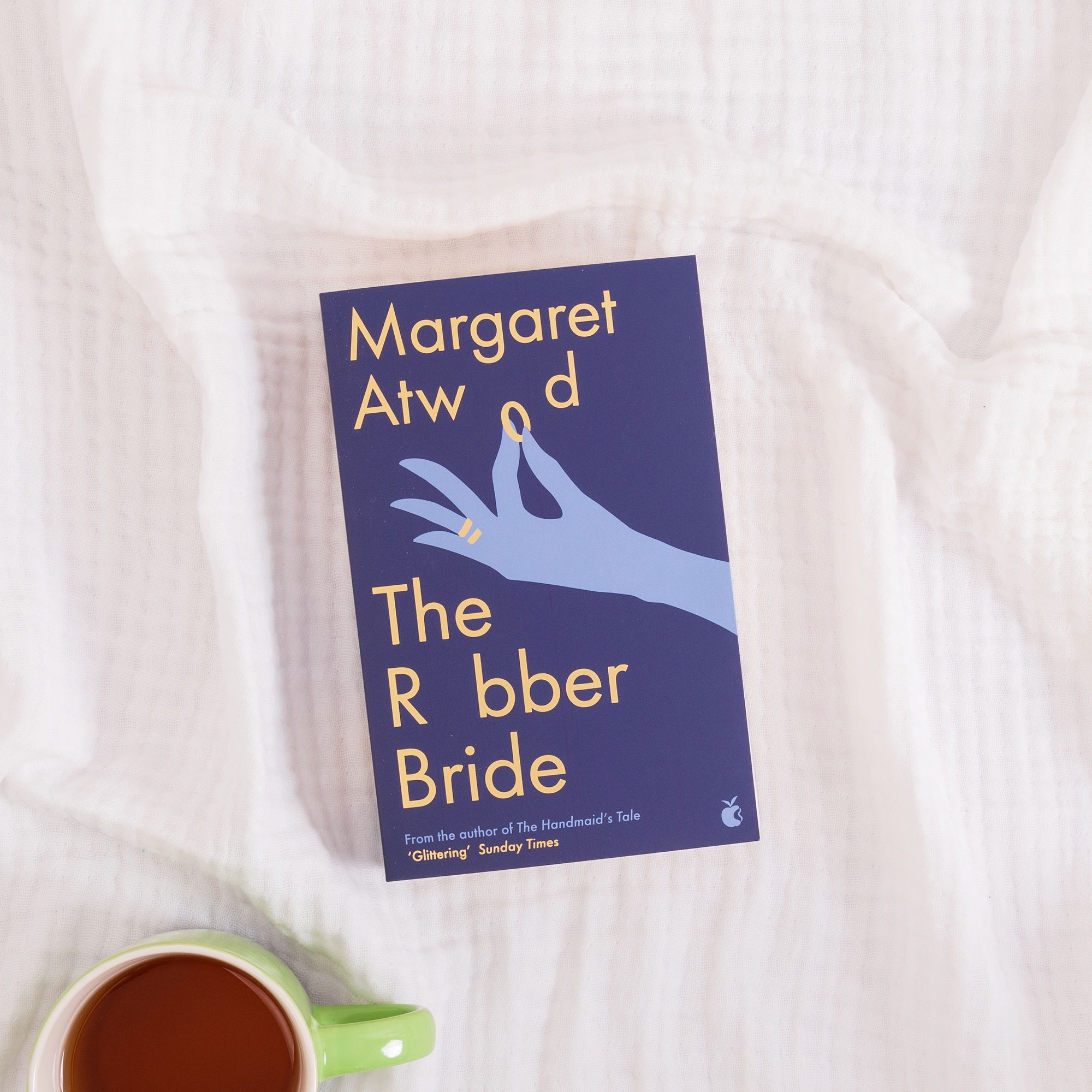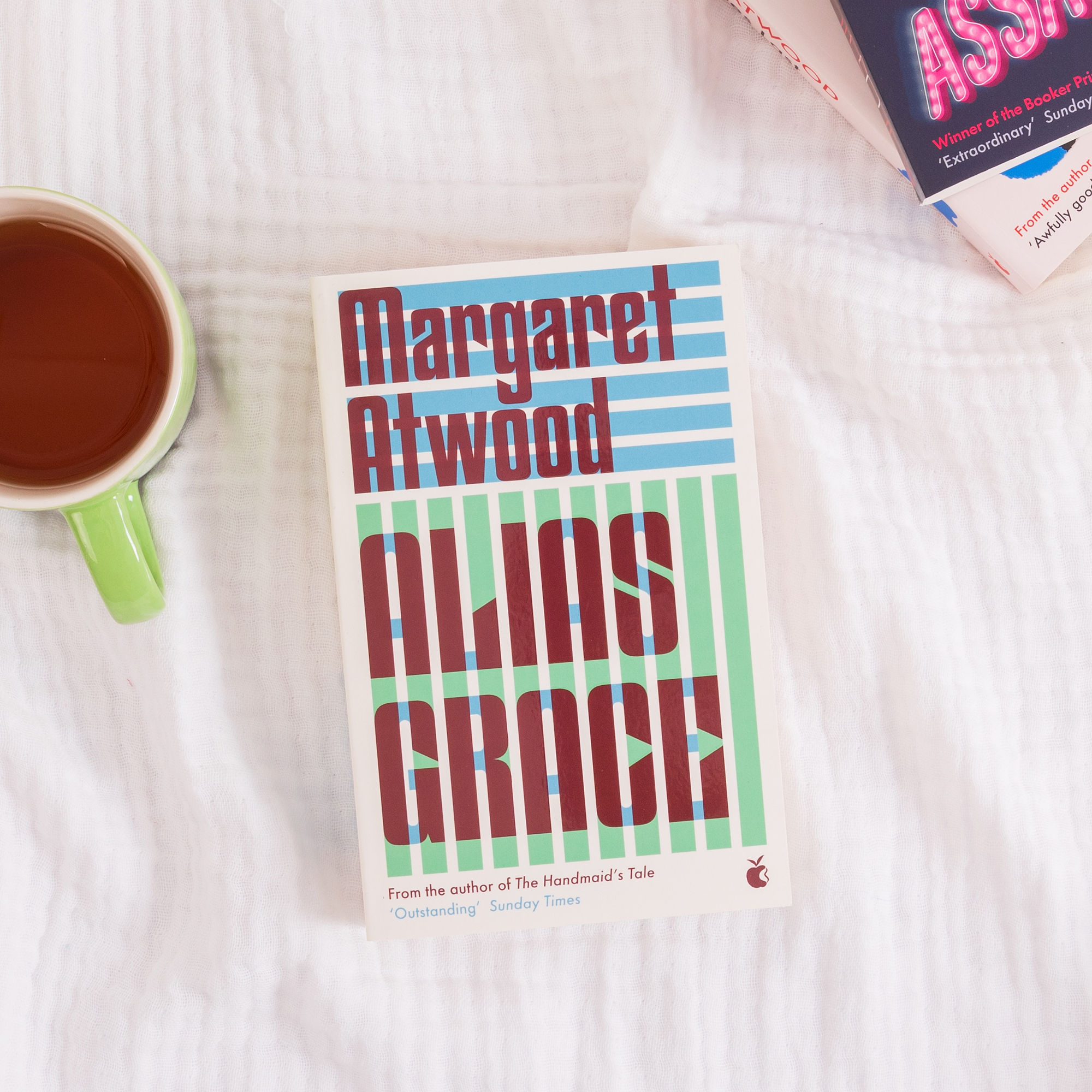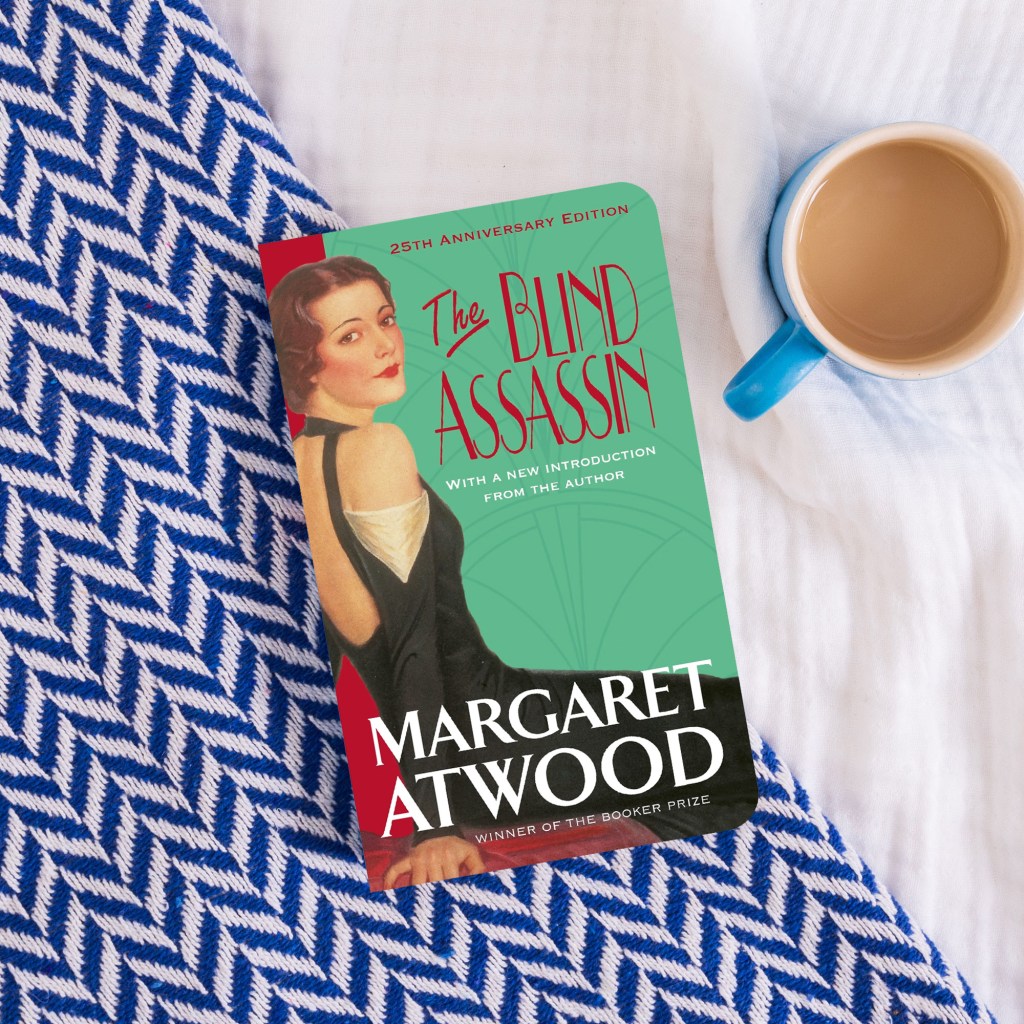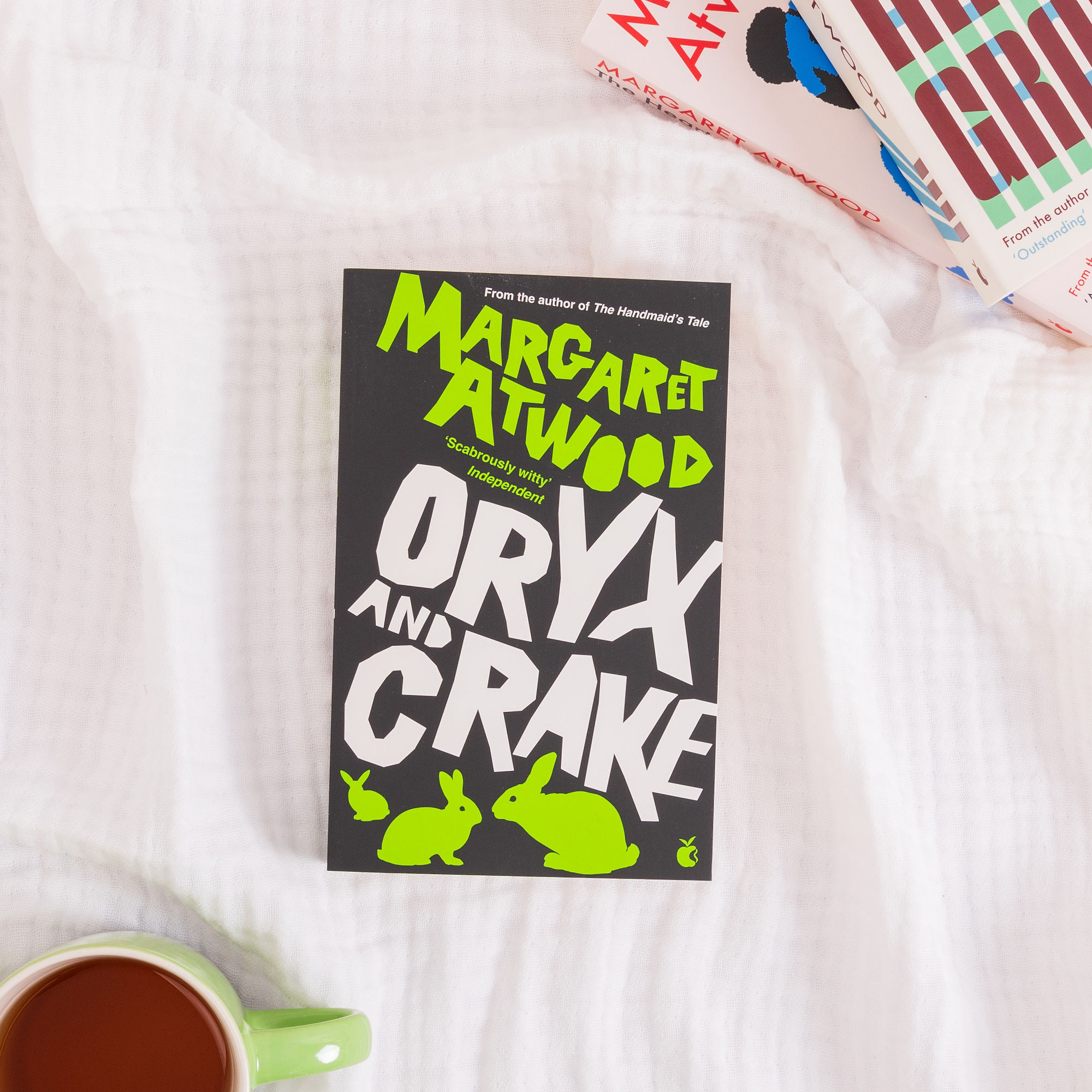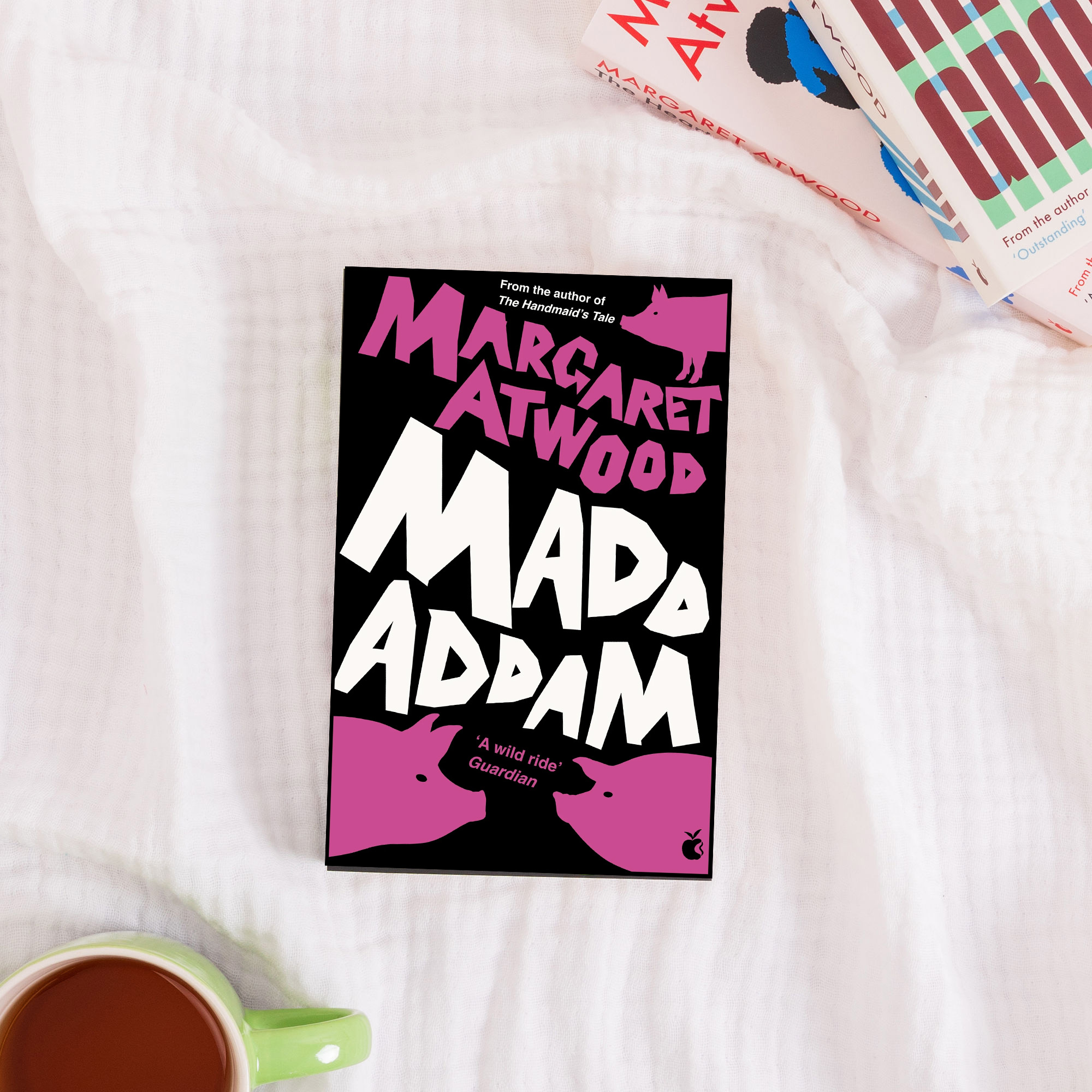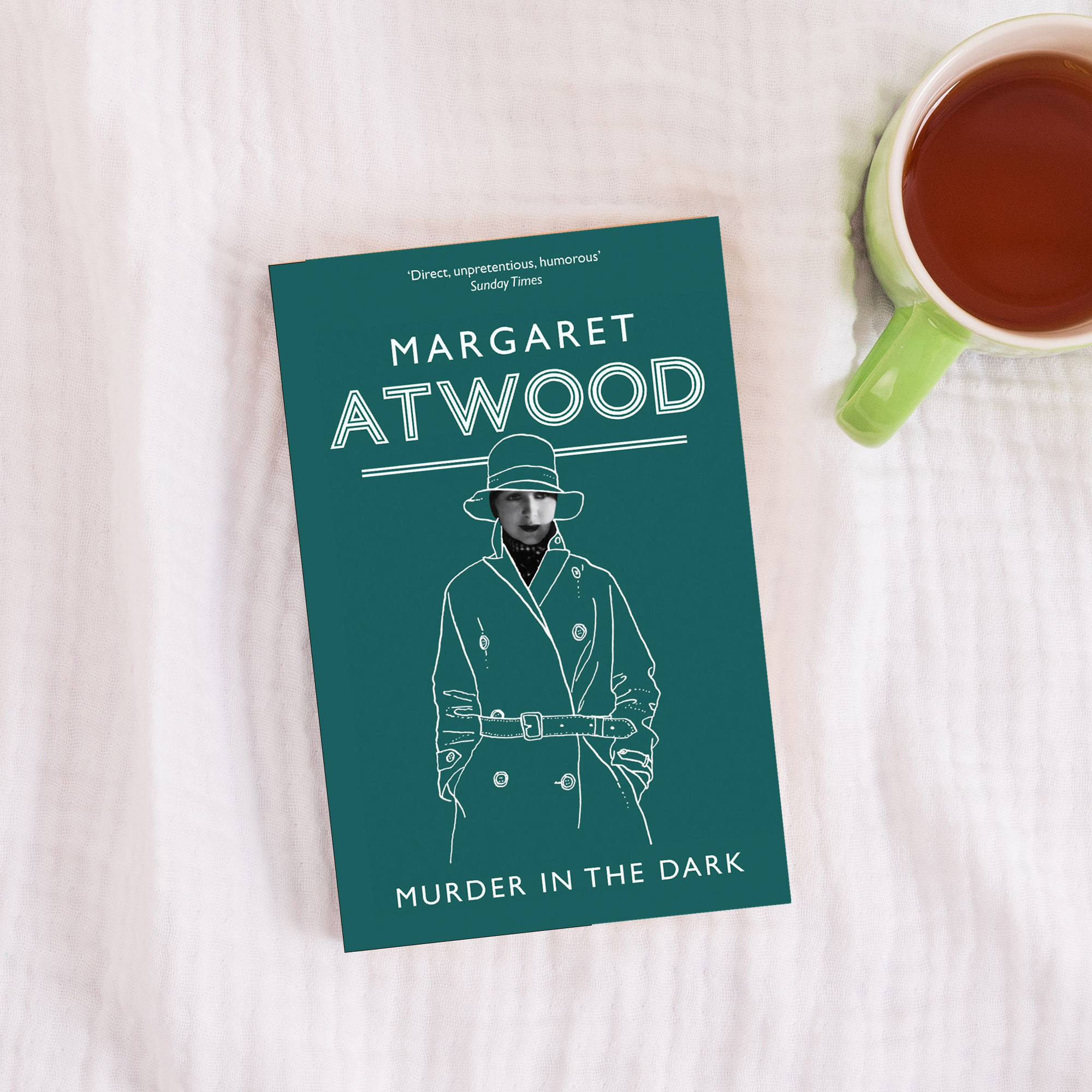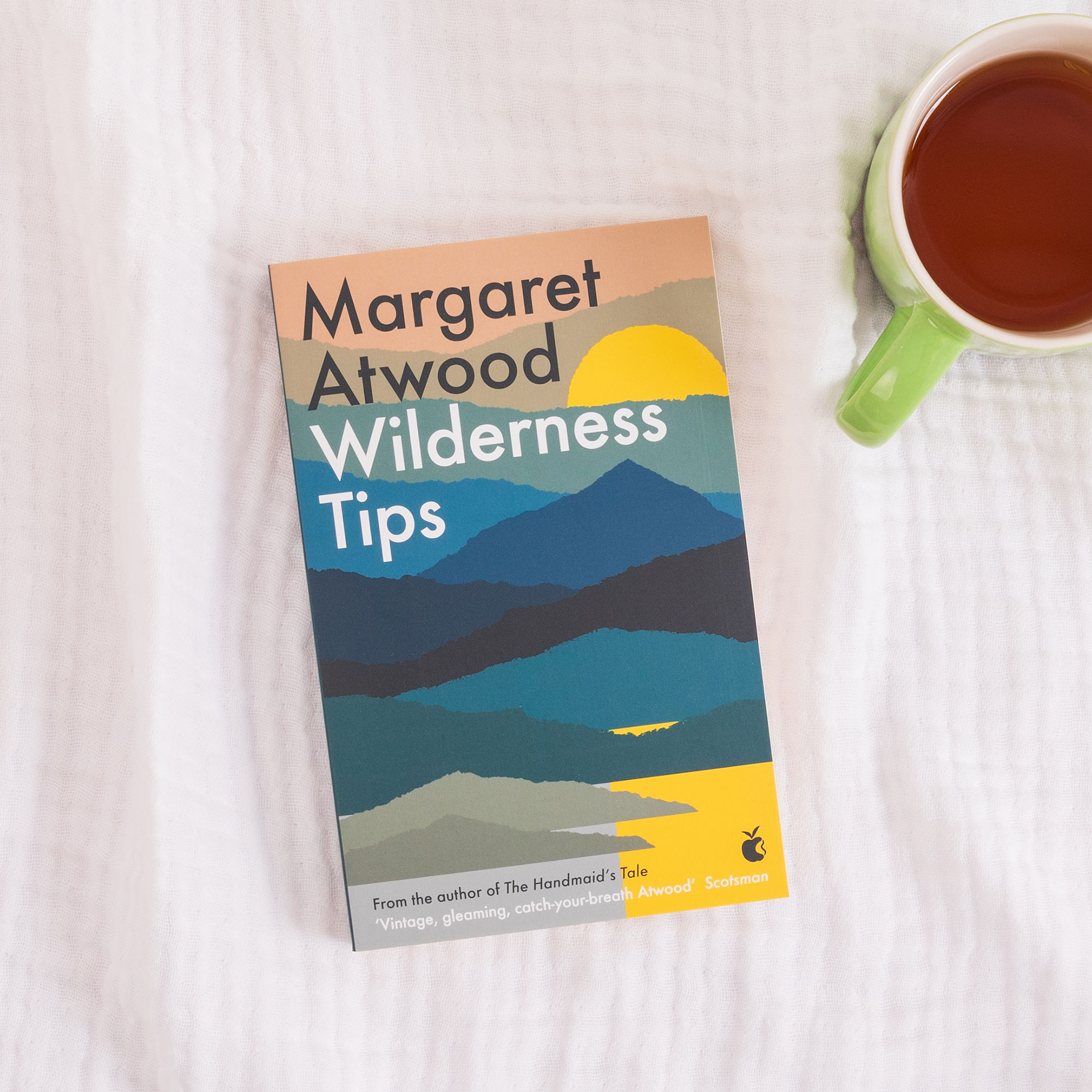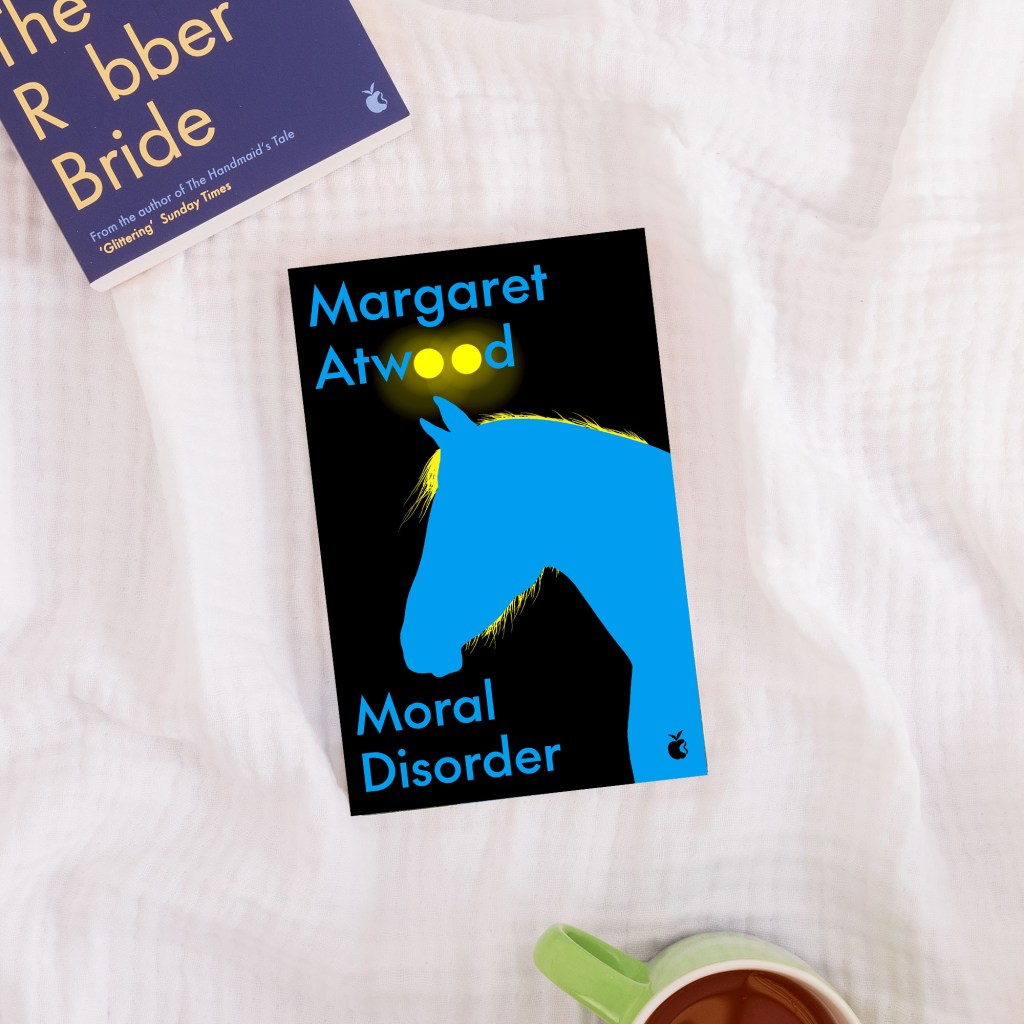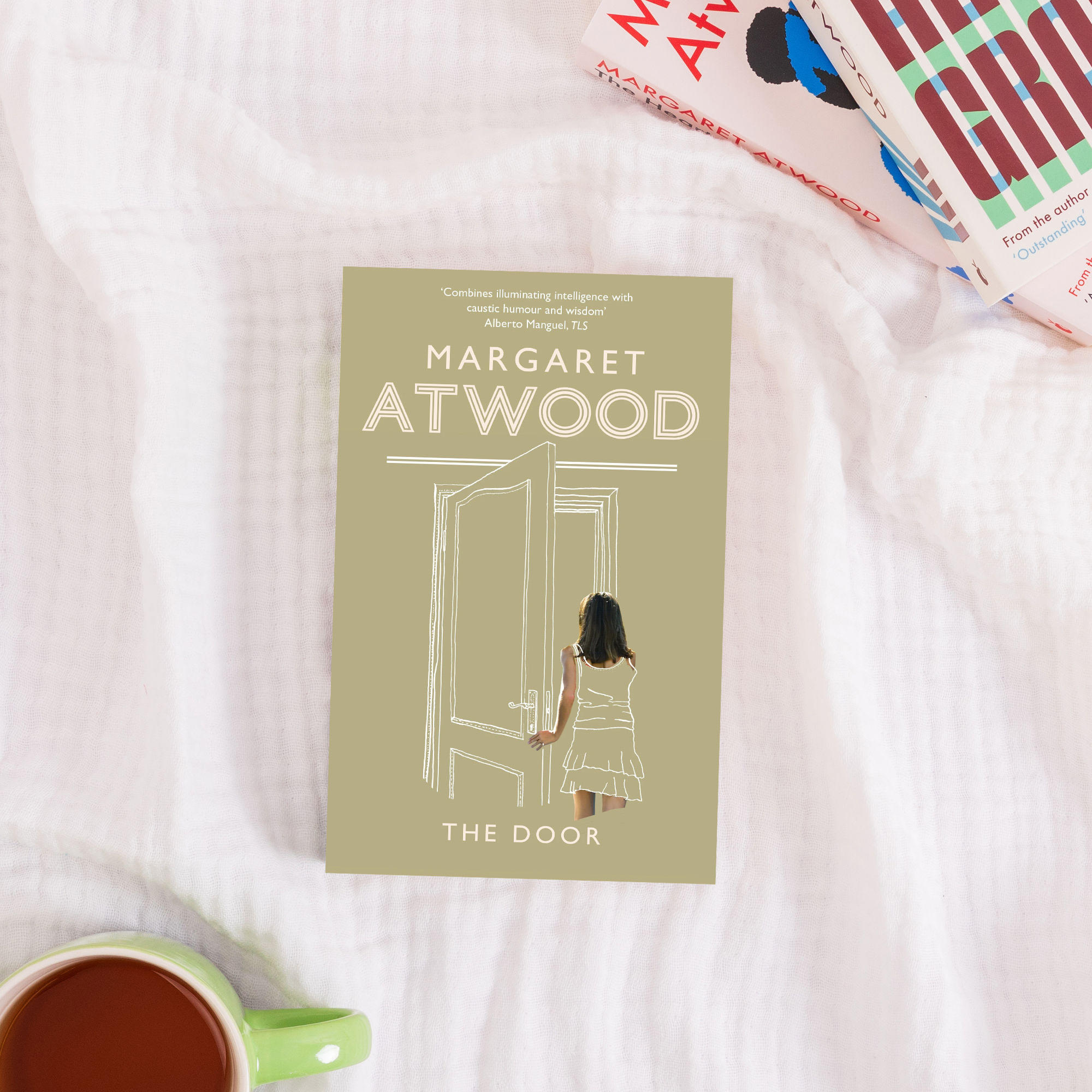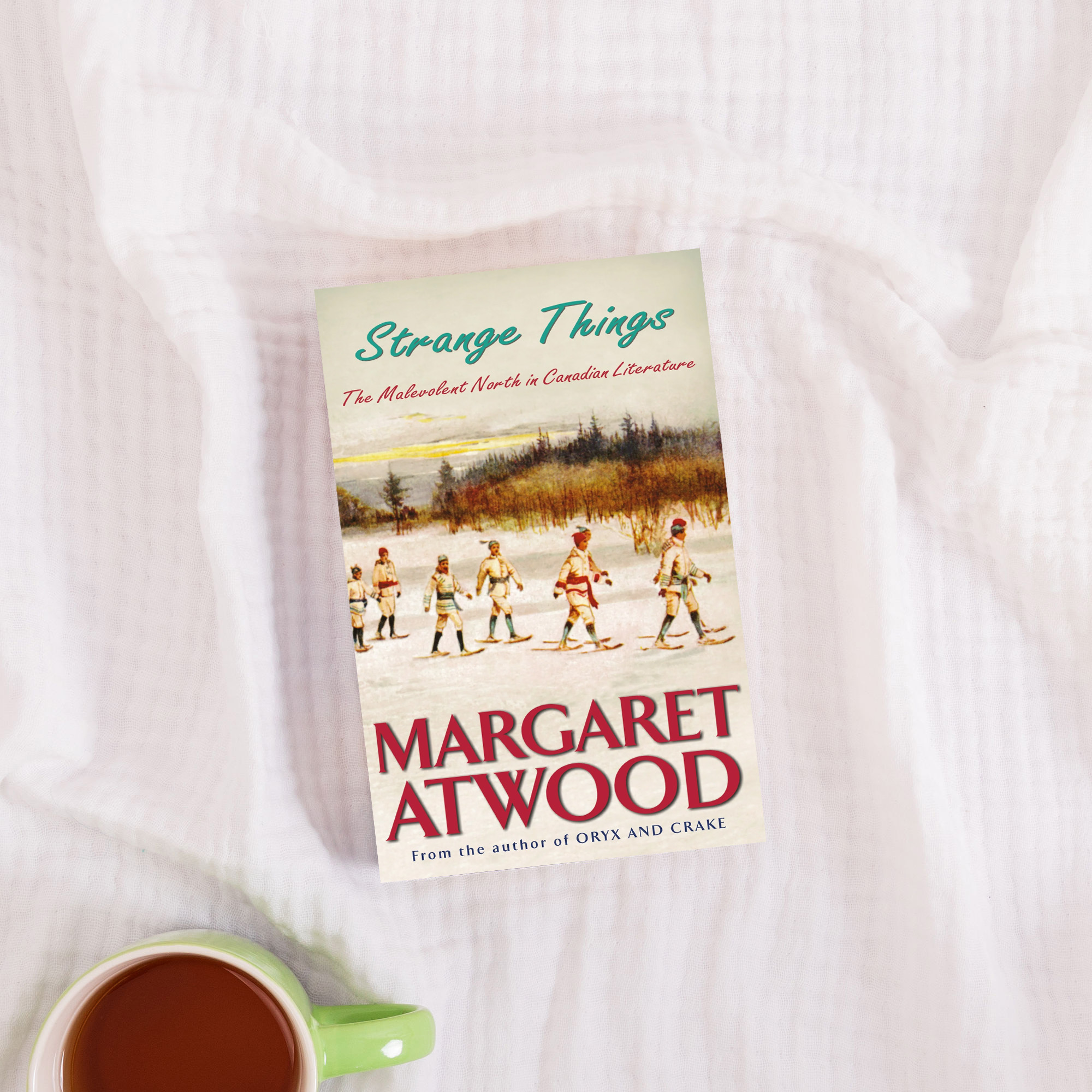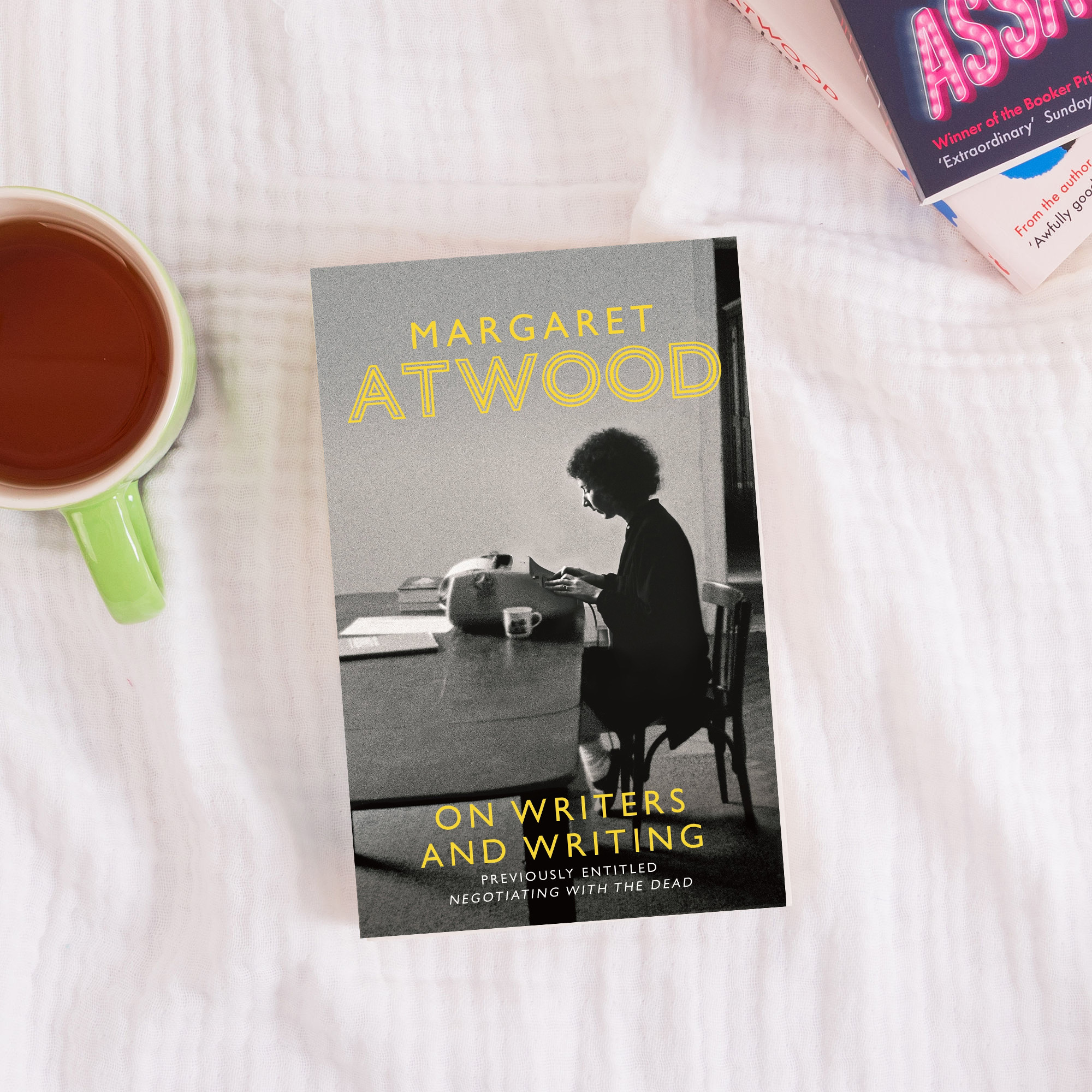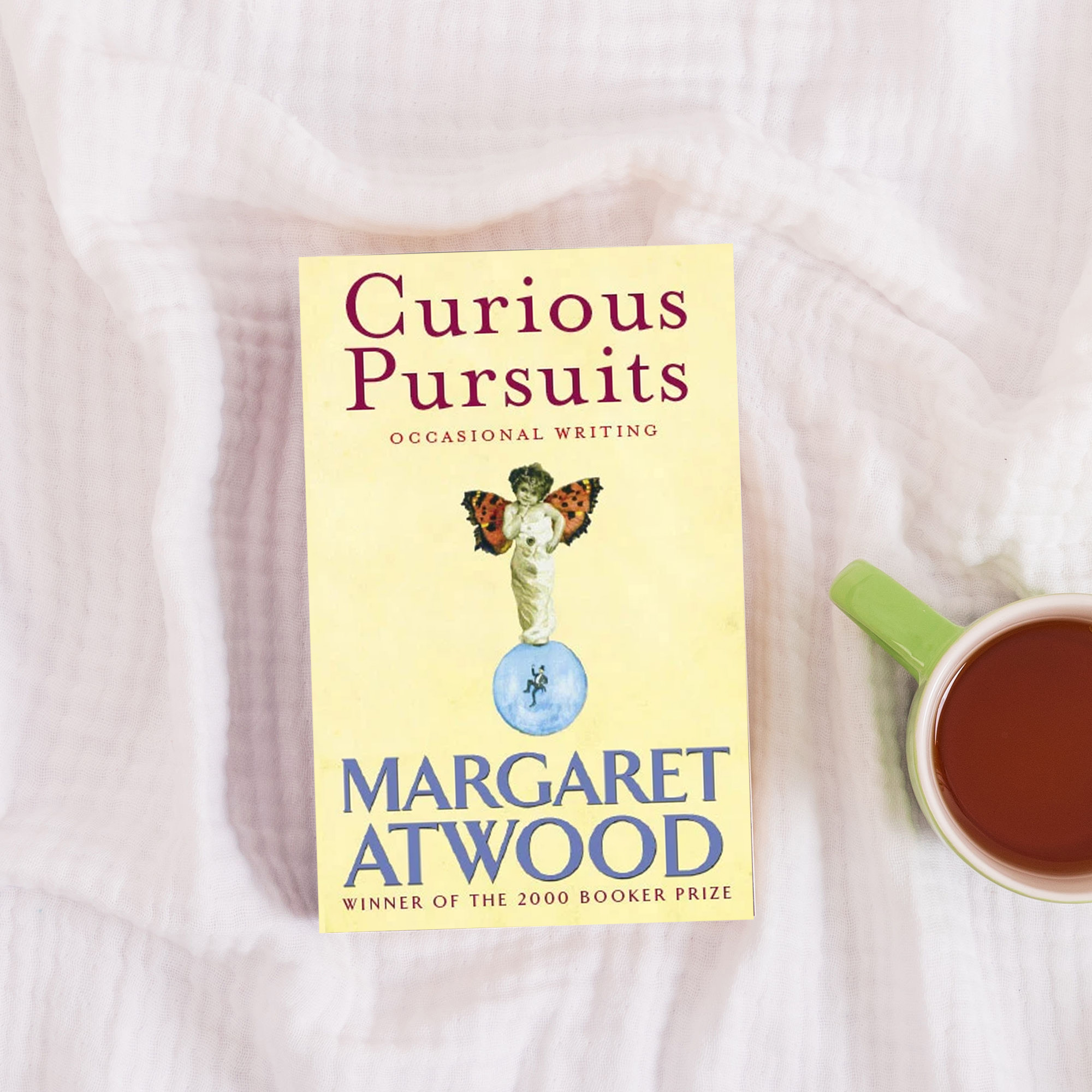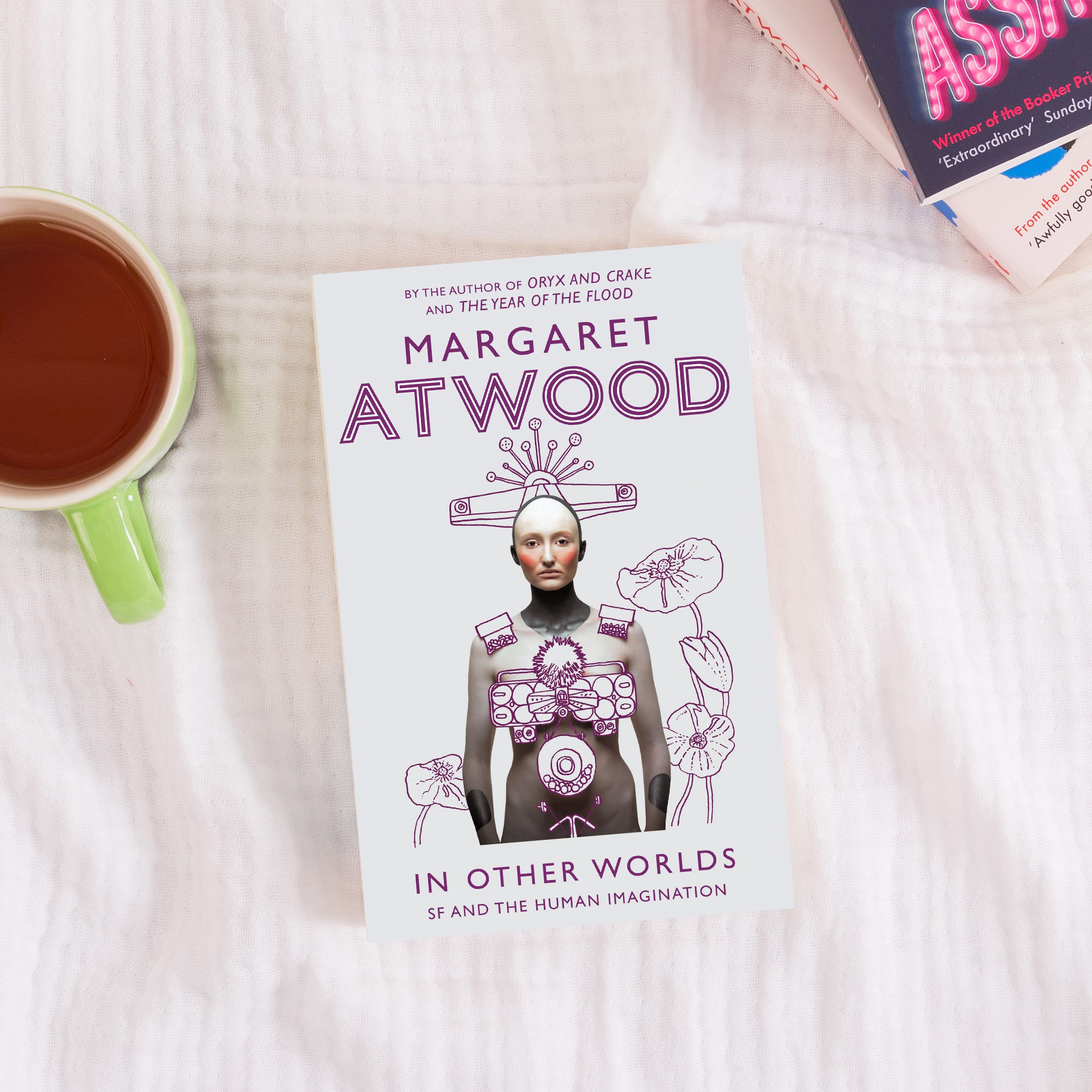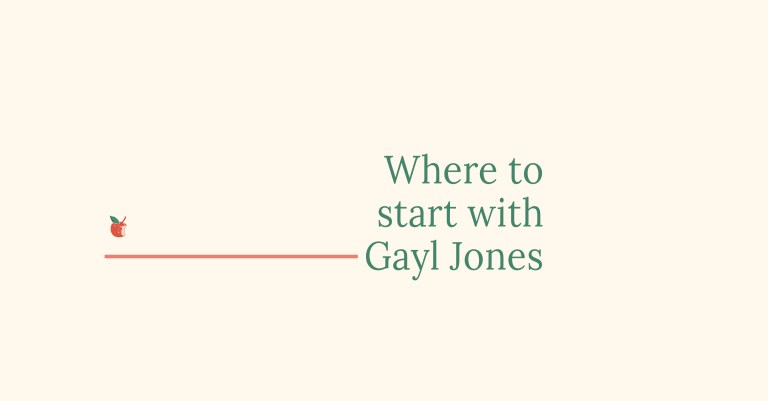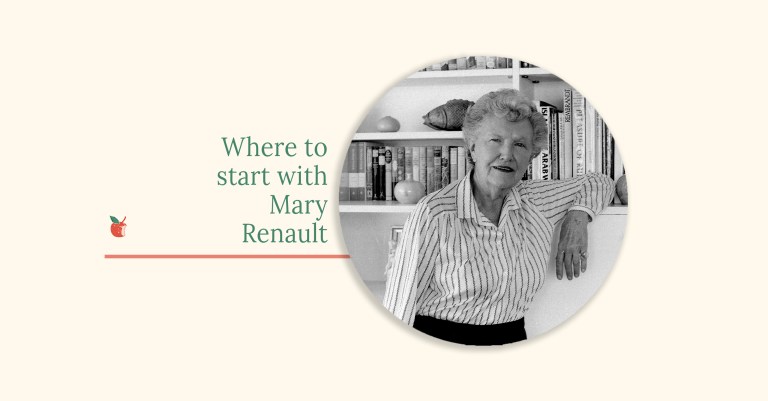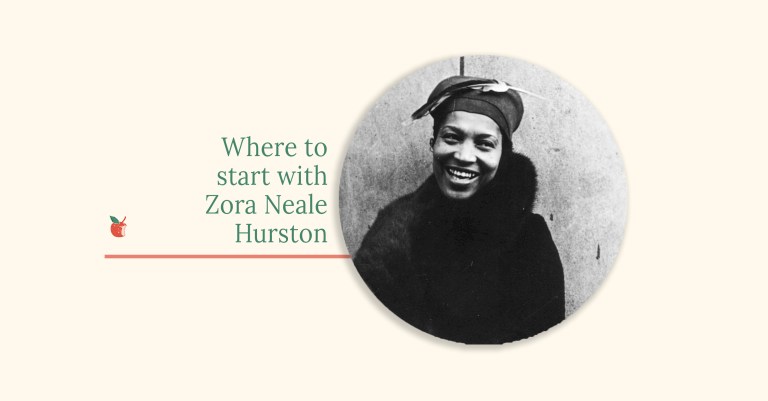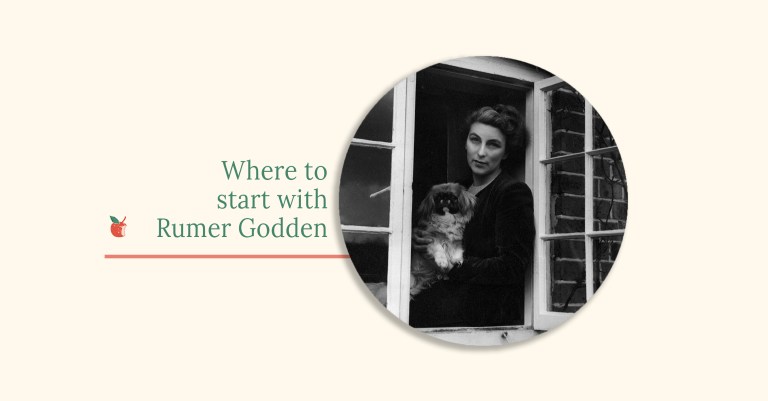Where to Start with Margaret Atwood
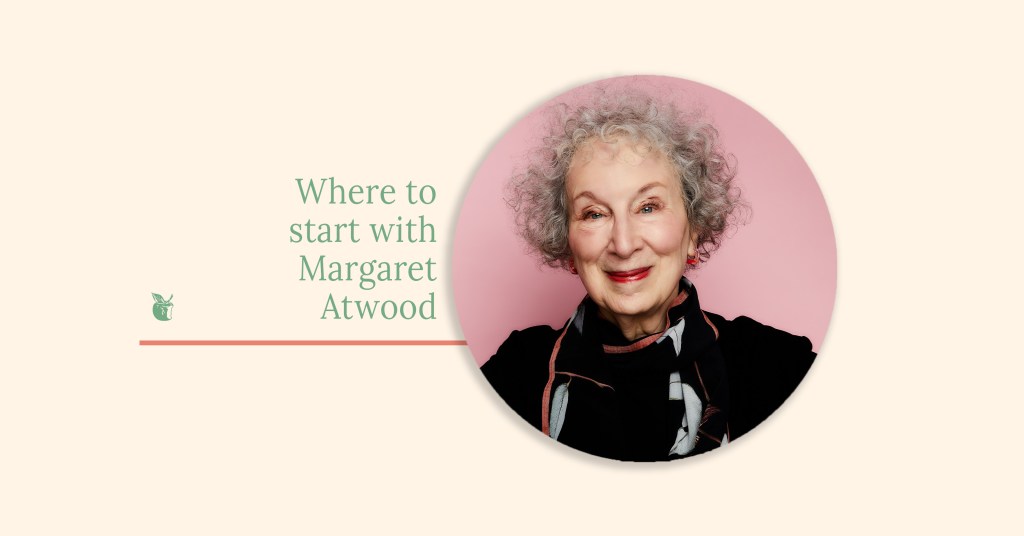
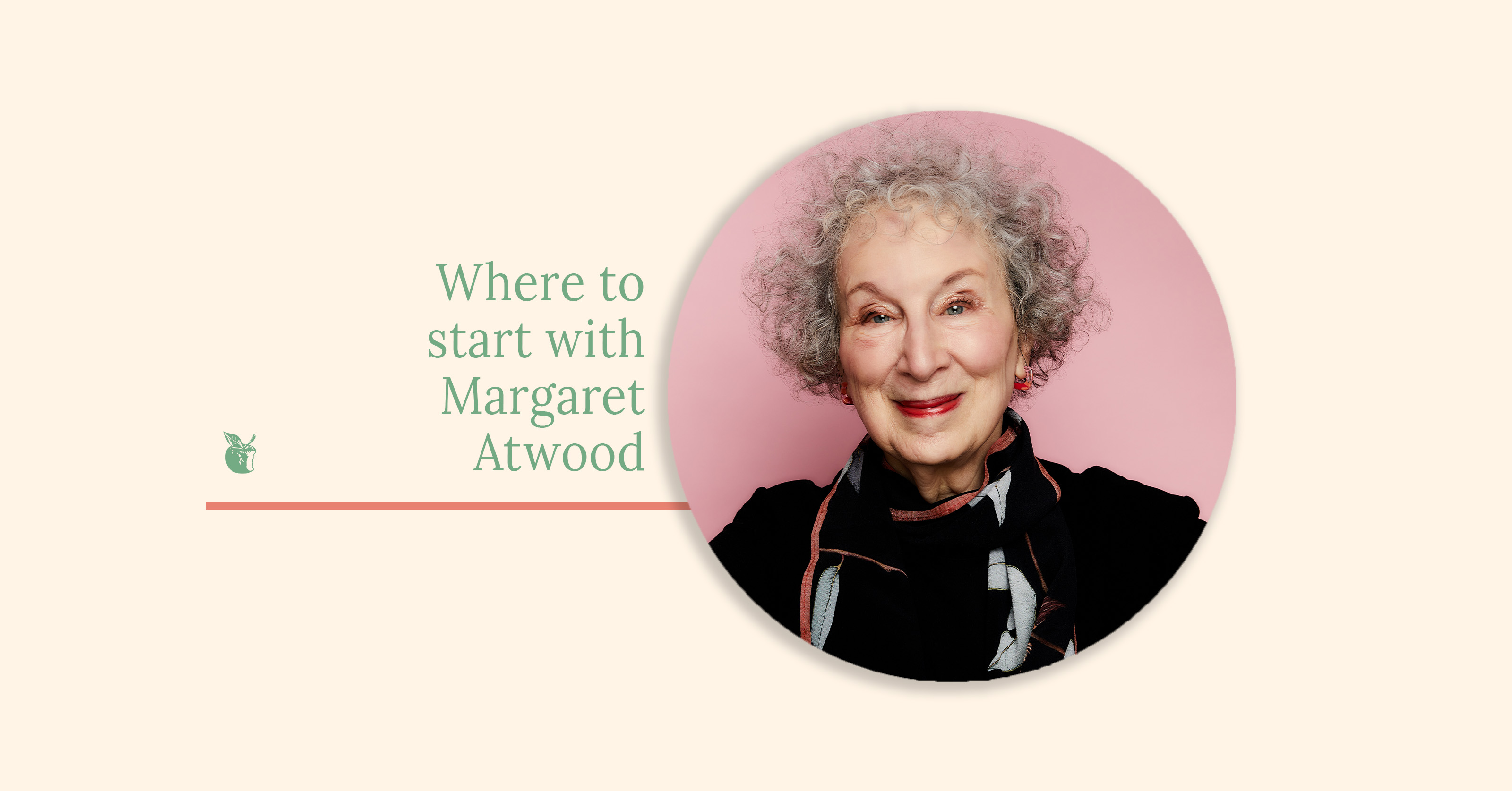
Margaret Atwood
Canadian novelist, short story writer, essayist and poet, Margaret Atwood is the author of more than forty books – and one of the preeminent authors writing in the English language today. Much garlanded with awards, prizes and honorary degrees, she has been published in over thirty-five countries.
‘Margaret Atwood [is] a living legend’ New York Times Book Review
‘The outstanding novelist of our age’ Sunday Times
In 2020 Margaret Atwood was a guest on the inaugural season of the OurShelves podcast. Click here to listen to the episode.
‘Margaret Atwood is one of the most brilliant and unpredictable novelists alive’ Elaine Showalter, New Statesman
ON MARGARET ATWOOD
Surfacing and The Edible Woman were the first novels of hers that we published at Virago. It was 1979, only six years after we were founded by Carmen Callil, and Margaret Atwood immediately understood us: `Virago felt like home to me, as many Canadian writers of my generation had been involved in similarly small ventures . . . Carmen was a wild colonial girl, like me, only wilder. In her hands the Old School Tie publishing network was about to become macrame.’
Margaret has published most of her paperbacks, and audio books, with us since then.
Initially, I remember, the Brits didn’t know quite what to make of this savvy Canadian writer. Canada was thought to be big, snowy and rough and Margaret Atwood’s childhood in the backwoods accorded with that vision, but Canadians were also supposed to be a bit dull and here was a woman who knocked that annoying notion on its British head. (I speak as a fellow Canadian). Staggeringly, wide-rangingly clever and very witty, she, rightly, expects the most of others. It is something I learned to step up to over the years – and no bad thing at all.
Boundaries, genres, boxes, classifications or categories do not contain her – look at the range of her writing: historical novels (I especially love Alias Grace), speculative fiction, murderous short stories, deeply personal poetry, piercing essays.
There was – and still is – a `Do It Yourself’ quality about her. She didn’t mind sharing taxis with large display cases (dumpbins) and boxes of her novels – she told tales of dragging her books on a sleigh through ice and snow to readings in northern Ontario; she didn’t mind readers asking odd questions – she’d once been asked if her hair was naturally curly; she didn’t mind long publicity hauls with terrible food and indifferent hotels – ‘It’s all material’. She’s been a trouper all her working life – speaking out and standing up for others – at the same time as writing more novels, essays, short stories, children’s books and poetry.
Even before the remarkable effect of The Handmaid’s Tale Atwood’s is a voice we listened to as she has the knack of seeing and naming.
She’s never shied from the truth. Cat’s Eye was likened to Golding’s Lord of the Flies – showing the particular cruelty girls can inflict on each other; and The Robber Bride has at its core a dastardly woman, Zenia, who steals the men of her `friends’.
Margaret has always shown the full gamut of female experience in her novels; her characters are true and fully realised and women’s lives are the motor of her fiction.
In literature and in life she’s funny, fearless, flinty and formidable. My heroine.
Lennie Goodings, Virago Chair
(Drawn from her memoir, A Bite of the Apple.)
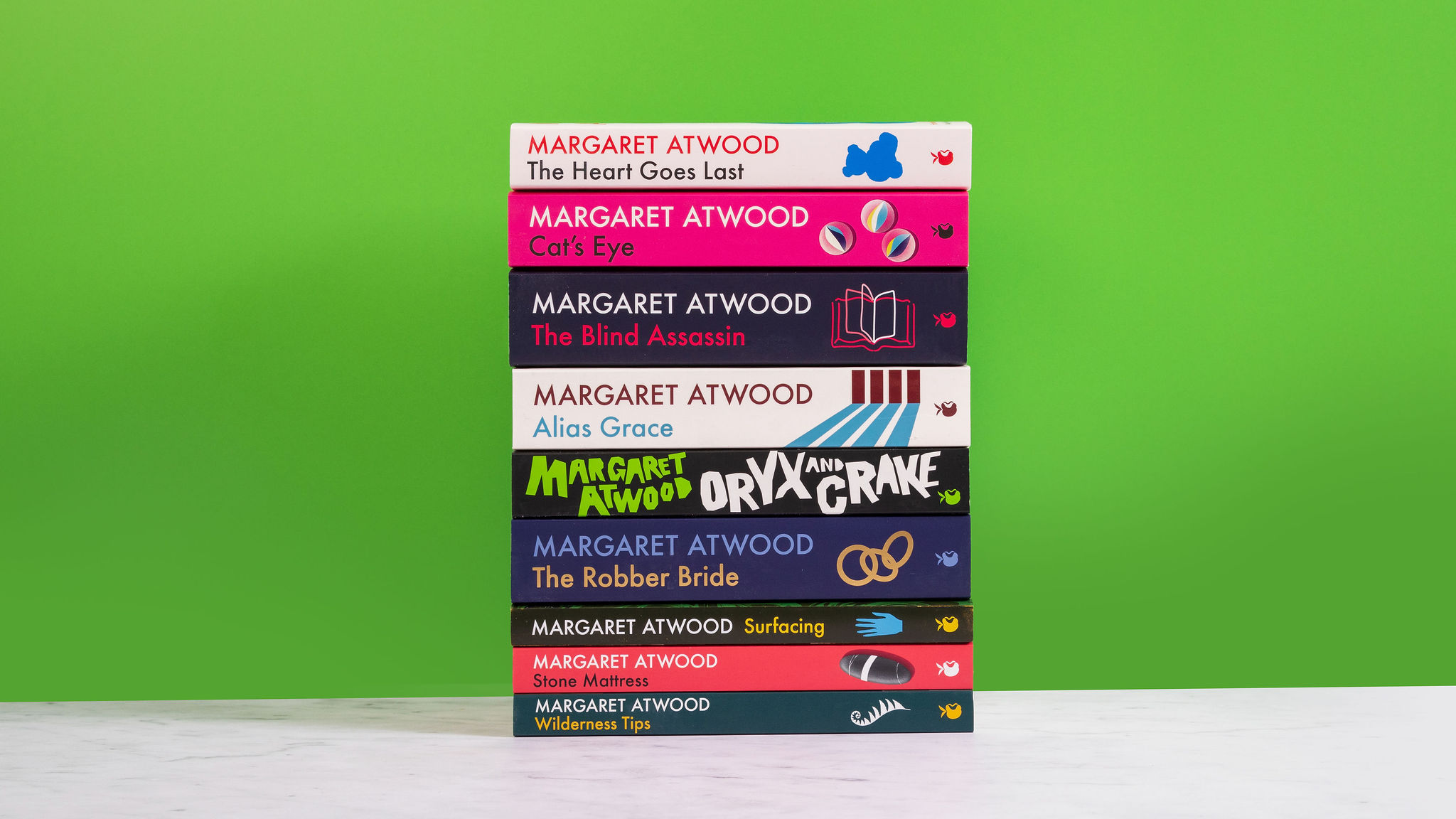
MARGARET ATWOOD READING GUIDE
Read on for a guide to the more than twenty Margaret Atwood titles Virago publish, by category.
FICTION
The Edible Woman
Novel
The Edible Woman is the first novel published by Margaret Atwood in 1969 – it is both a scathingly funny satire of consumerism and a heady exploration of emotional cannibalism. It explores themes such as loss of identity, alienation and sexist culture.
‘Atwood has the magic of turning the particular and the parochial into the universal’ The Times
‘Clara’, she said, ‘do you think I’m normal?’
‘I’d say you’re almost abnormally normal, if you know what I mean.’
Marian is determinedly ordinary, waiting to get married. She likes her work, her broody flatmate and her sober fiancé Peter. All goes well at first, but Marian has reckoned without an inner self that wants something more, that calmly sabotages her careful plans, her stable routine – and her digestion. Marriage à la mode, Marian discovers, is something she literally can’t stomach . . .
Click here to listen to audiobook of The Edible Woman
Surfacing
Novel
Surfacing was first published in 1972, The novel is a psychological thriller that unfolds in the rugged Canadian wilderness. The protagonist, an unnamed woman, returns to her childhood home with friends, embarking on a quest for her missing father. As the journey progresses, the boundaries between reality and madness blur, revealing layers of repressed trauma. Atwood’s narrative explores the protagonist’s unraveling psyche and the intricate interplay between personal history and the natural world. The novel explore language as connection to society and the total alienation of women.
One of the most important novels of the 20th century . . . utterly remarkable’ New York Times
I feel it will be different if I look myself. Probably when we get there my father will have returned from wherever he has been, he will be sitting in the cabin waiting for us.’
A young woman returns to northern Quebec, to the remote island of her childhood, with her lover and her two friends to investigate the mysterious disappearance of her father. Flooded with memories, she begins to realise that going home means entering not only another place but another time. As the wild island exerts its elemental hold and she is submerged in the language of the wilderness, she sees that what she is really looking for is her own past.
‘A stunning and satisfying book’ Time Out
‘Utterly absorbing’ Sunday Times
‘Atwood has undertaken a serious and complex task. . . . She shows the depths that must be explored if one attempts to live an examined life’ New York Times Book Review
‘Margaret Atwood is one of the most intelligent and talented writers to set herself the task of deciphering life in the late twentieth century’ Vogue
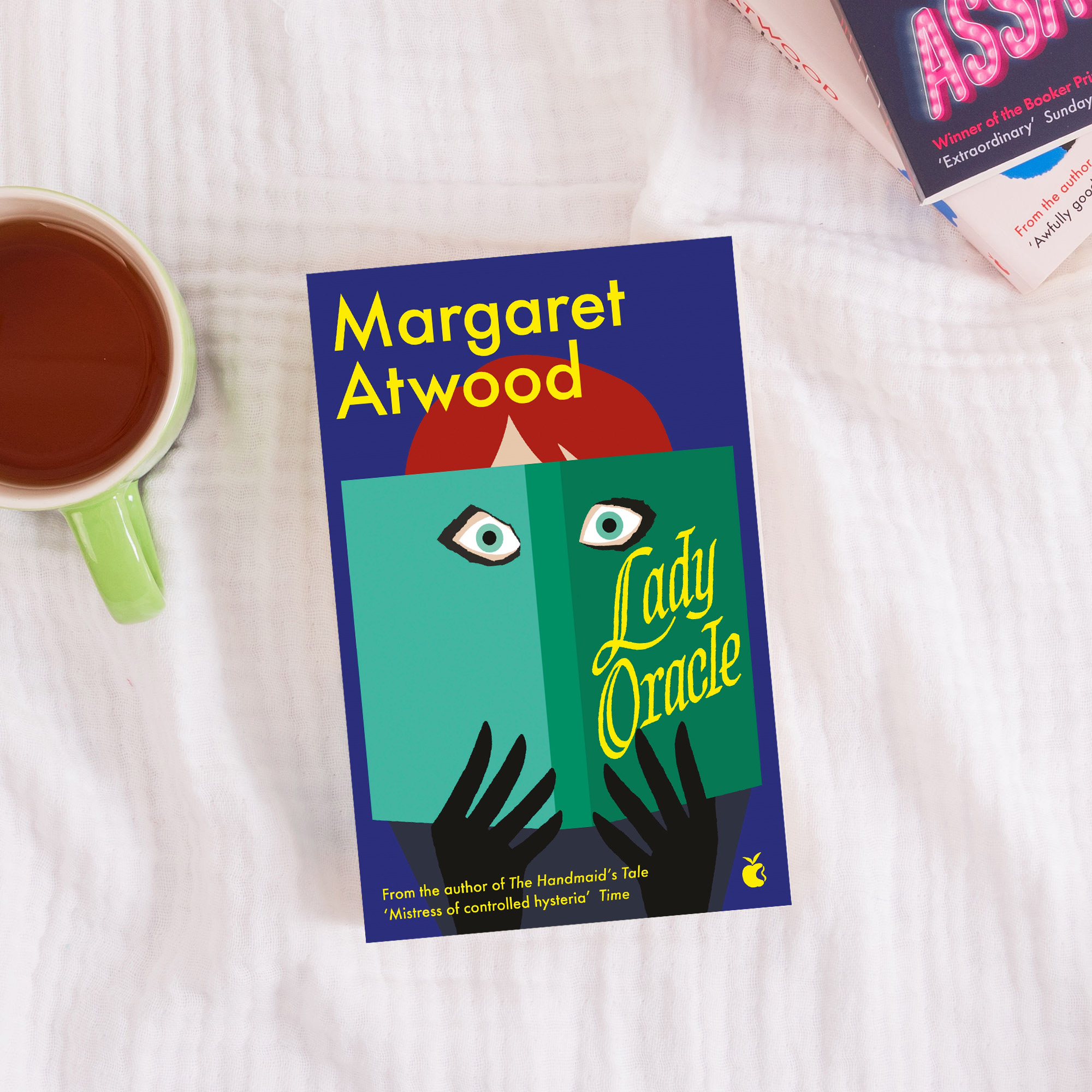
Lady Oracle
Novel
Lady Oracle is a novel by Margaret Atwood that parodies Gothic romances and fairy tales. It was first published in 1976.
The trick was to disappear without a trace, leaving behind me the shadow of a corpse, a shadow everyone would mistake for solid reality. At first I thought I’d managed it.
Fat girl, thin girl. Red hair, brown hair. Polish aristocrat, radical husband. Joan Foster has dozens of different identities, and she’s utterly confused by them all. After a life spent running away from difficult situations, she decides to escape to a hill town in Italy to take stock of her life.
But first she must carefully arrange her own death.
‘A very funny novel, lightly told with wry detachment and considerable art’ Washington Post
‘A mistress of controlled hysteria’ Time
‘If you feel safe only with “nine to five” reality, you’ll probably not enjoy Atwood’s books. But if you’d like to lift off, try her’ Cosmopolitan
Click here to listen to the audiobook of Lady Oracle
Cat’s Eye
Novel
Cat’s Eye was first published in 1988, it tells the story of Elaine Risley, a successful artist who returns to her hometown of Toronto for a retrospective of her work and is forced to confront the memories of childhood bullying. Atwood weaves a compelling narrative that delves into the psychological impact of cruelty and the evolving nature of female friendships. The novel explores themes of memory, trauma, and the power of art to both heal and harm.
Cat’s Eye explores the construction of identity; it is written mostly as flashbacks, as Elaine reflects on the forgotten events of her childhood that shaped her personality and struggles to integrate lost aspects of her self. Themes woven through the novel are: the inevitability of aging, patriarchy and artificiality.
‘I read this when I was about sixteen and remember its menace. It is about the potential toxicity in female friendships, which is a contentious issue. Atwood is never pigeonholed, she’s wry and has a poet’s eye’ Jessie Burton, author of The Miniaturist
Elaine Risley, a painter, returns to Toronto to find herself overwhelmed by her past. Memories of childhood – unbearable betrayals and cruelties – surface relentlessly, forcing her to confront the spectre of Cordelia, once her best friend and tormentor, who has haunted her for forty years.
‘Not since Graham Greene or William Golding has a novelist captured so forcefully the relationship between school bully and victim’ Listener
Click here to listen to the audiobook of Cat’s Eye
The Robber Bride
Novel
Zenia is beautiful, smart and greedy, by turns manipulative and vulnerable, needy and ruthless; a man’s dream and a woman”s nightmare. She is also dead. Just to make sure Tony, Roz and Charis are there for the funeral. But five years on, as the three women share an indulgent, sisterly lunch, the unthinkable happens; ‘with waves of ill will flowing out of her like cosmic radiation’, Zenia is back . . .
First published in 1993, The Robber Bride is set in present-day Toronto, Ontario. The novel is about three women and their history with old friend and nemesis, Zenia. It alternates between the present and the past through flashbacks, in the third person perspective of Tony, Charis and Roz. Zenia gives each woman a different version of her biography, tailor-made to insinuate herself into their lives. No one version of Zenia is the truth, and the reader knows no more than the characters. The Robber Bride is inspired by ‘The Robber Bridegroom,’ a wonderfully grisly tale from the Brothers Grimm in which an evil groom lures three maidens into his lair and devours them, one by one. But in her version, Atwood brilliantly recasts the monster as Zenia, a villainess of demonic proportions, and sets her loose in the lives of three friends, Tony, Charis, and Roz.
The novel, like many other works by Atwood, deals with power struggles between men and women, while also being a meditation on the nature of female friendship, power and trust. Zenia’s character can be read as either the ultimate self-empowered woman—a traitor who abuses sisterhood—or a self-interested mercenary who cunningly uses the “war between the sexes” to further her interests.
In 2014, Atwood published the short story ‘I Dream of Zenia with the Bright Red Teeth’, which revisits Roz, Tony and Charis in the present day, when Charis believes that her new pet dog Ouida is possessed by the spirit of Zenia. Originally published by the Canadian magazine The Walrus, the story also appears in her 2014 short story collection Stone Mattress.
Click here to listen to the audiobook of The Robber Bride
Alias Grace
Novel
‘Brilliant… Atwood’s prose is searching. So intimate it seems to be written on the skin’ Hilary Mantel
Click here to listen to the audiobook of Alias Grace
In 2017 Alias Grace was adapted as a series by Netflix.
The Blind Assassin
Novel
Sexually explicit for its time, The Blind Assassin describes a risky affair in the turbulent thirties between a wealthy young woman and a man on the run. During their secret meetings in rented rooms, the lovers concoct a pulp fantasy set on Planet Zycron. As the invented story twists through love and sacrifice and betrayal, so does the real one; while events in both move closer to war and catastrophe. By turns lyrical, outrageous, formidable, compelling and funny, this is a novel filled with deep humour and dark drama.
First published in 2000 The Blind Assassin features three embedded storylines and explores the themes of wealth and corruption, appearance vs. reality and the disempowerment of women. It won the Man Booker Prize in 2000 and the Hammett Prize in 2001.
‘The fertility of Atwood’s imagination is something extraordinary’ Kate Kellaway, Literary Review
Laura Chase’s older sister Iris, married at eighteen to a politically prominent industrialist but now poor and eighty-two, is living in Port Ticonderoga, a town dominated by their once-prosperous family before the First War. While coping with her unreliable body, Iris reflects on her far from exemplary life, in particular the events surrounding her sister’s tragic death. Chief among these was the publication of The Blind Assassin, a novel which earned the dead Laura Chase not only notoriety but also a devoted cult following.
Click here to listen to the audiobook of The Blind Assassin
MaddAddam Trilogy
Novels
Margaret Atwood’s stunning dystopian trilogy imagines a near future devastated by genetic engineering and plague, where those remaining humans must fight to survive.
Oryx and Crake
Novel
Oryx and Crake is the first in Atwood’s Maddaddam trilogy – a work of speculative fiction, it was first published in 2003, the novel is set in a future world that has been devastated by a man-made plague and follows the character of Snowman, who may be the last human being left alive. Through Snowman’s memories, the novel explores the events leading up to the plague, as well as his relationships with his childhood friend Crake and the mysterious Oryx. It was shortlisted for the 2003 Man Booker Prize for Fiction, as well as for the 2004 Orange Prize for Fiction.
Oryx and Crake explores the double edge sword of scientific advancement, the dominance of corporate power and the devaluation of art.
Pigs might not fly but they are strangely altered. So, for that matter, are wolves and racoons. A man, once named Jimmy, lives in a tree, wrapped in old bedsheets, now calls himself Snowman. The voice of Oryx, the woman he loved, teasingly haunts him. And the green-eyed Children of Crake are, for some reason, his responsibility.
Click here to listen to the audiobook of Oryx and Crake
The Year of the Flood
Novel
The Year of the Flood is the second book in Margaret Atwood’s dystopian Maddaddam trilogy – first published in 2009. It answers some of the questions of Oryx and Crake, develops and further elaborates upon several of the characters in the first book and expands on themes of science, technology and religion.
‘A gripping and visceral book that showcases her pure storytelling talents with energy, inventiveness and narrative panache’ Michiko Kakutani, New York Times
The sun brightens in the east, reddening the blue-grey haze that marks the distant ocean. The vultures roosting on the hydro poles fan out their wings to dry them. the air smells faintly of burning. The waterless flood – a man-made plague – has ended the world.
But two young women have survived: Ren, a young dancer trapped where she worked, in an upmarket sex club (the cleanest dirty girls in town); and Toby, who watches and waits from her rooftop garden. Is anyone else out there?
Click here to listen to the audiobook of The Year of the Flood
Maddaddam
Novel
Maddaddam is the third and final book in Atwood’s Maddaddam trilogy – first published in 2013.
Andrew Sean Greer said in The New York Times, ‘Atwood has brought the previous two books together in a fitting and joyous conclusion that’s an epic not only of an imagined future but of our own past’.
Toby, a survivor of the man-made plague that has swept the earth, is telling stories.
Stories left over from the old world, and stories that will determine a new one.
Listening hard is young Blackbeard, one of the innocent Crakers, the species designed to replace humanity. Their reluctant prophet, Jimmy-the-Snowman, is in a coma, so they’ve chosen a new hero – Zeb, the street-smart man Toby loves. As clever Pigoons attack their fragile garden and malevolent Painballers scheme, the small band of survivors will need more than stories.
‘A haunting, restless triumph . . . A writer of virtuoso diversity’ Sunday Times
Click here to listen to the audiobook of Maddaddam
In 2022, choreographer Wayne McGregor was inspired to create a Ballet based on the Maddaddam trilogy. Watch the video below to find out more about the creation of this ballet:
The Heart Goes Last
Novel
No one writes the lust and the loves, the wickedness and the weakness of the human heart like the splendid Margaret Atwood.
The Heart Goes Last was first published in 2015, the reissue featured above was published in 2021. The novel won the Red Tentacle award at the 2015 Kitschies. The Heart Goes Last starts out as a classic Atwood dystopian novel, but morphs into a savage, surreal adventure that examines self-deception and corporate control. It is both wickedly funny and deeply disturbing.
‘Gloriously madcap . . . You only pause in your laughter when you realise that, in its constituent parts, the world she depicts here is all too horribly plausible’ Stephanie Merritt, Observer
Charmaine sees an advertisement for a project called Positron that promises you a job, a place to live, a bed to sleep in – imagine how appealing that would be if you were working in a dive bar and living in your car. She and her husband, Stan, apply at once.
The only catch is that once you’re in there, you can’t get out.
‘Her eye for the most unpredictable caprices of the human heart and her narrative fearlessness have made her one of the world’s most celebrated novelists’ Naomi Alderman, Guardian
‘The bestselling author who shot to fame thirty years ago with The Handmaid’s Tale is still at her darkly comic best’ Sunday Times
SHORT STORIES
Murder in the Dark
Short Fiction and Poetry Collection
Murder in the Dark is a collection of short stories, first published in 1983. The twenty-seven pieces range over a variety of styles, including fictionalised autobiography, parables, travel stories, satires and prose poems. The pieces hold together through their major themes of loss, menace and terror and men’s abuse of power.
‘These vignettes glow with the usual Atwood magic’ British Book News
A beautifully bizarre assortment of short stories and prose poems. Writing on an eclectic range of subjects from ‘Bread’ and ‘Strawberries’, to ‘Fainting’ and ‘Women’s Novels’, Margaret Atwood brings her astonishing world view to the comings and goings of ordinary life. The pretentious male chef is taken down a peg, a gang of cynical five year olds concoct a poisonous brew; and knowing when to stop is of deadly importance in a game of Murder in the Dark.
Wilderness Tips
Short Fiction Collection
Wilderness Tips is a collection of short stories, first published in 1991.
‘Funny, sharp and always incisive’ Time Out
A leathery bog-man transforms an old love affair; a sweet, gruesome gift is sent by the wife of an ex-lover; landscape paintings are haunted by the ghost of a young girl.
This dazzling collection of ten short stories takes us into familiar Atwood territory to reveal the logic of irrational behaviour and the many textures lying beneath ordinary life.
‘Atwood is a writer of importance, with a deep understanding of human behaviour, a beautiful understated style and, rarest of all, a broad scope’ Marilyn French
‘Everything Atwood forms in words has substance and weight’ Daily Telegraph
‘Margaret Atwood deserves an adjective – Atwoodian – in recognition of her virtuoso wit and unmistakable style’ Chicago Tribune
Click here to listen to the audiobook of Wilderness Tips
Good Bones
Short Fiction Collection
Queen Gertrude gives Hamlet a piece of her mind.
An ugly sister and a wicked stepmother put in a good word for themselves.
A reincarnated bat explains how Bram Stoker got Dracula hopelessly wrong.
Good Bones is a bewitching cocktail of prose and poetry, fiction and fairytales, as well as some of Atwood’s own illustrations. It’s pure distilled Atwood: deliciously strong and bittersweet. A treasure trove of collected works.
‘A marvellous miniature sample case of Atwood’s sensuous and sardonic talents’ Times Literary Supplement
First published in 1994 with the title Bones and Murder, Good Bones is an eclectic collection featuring parables, monologues, prose poems, condensed science fiction and reconfigured fairy tales. Virago published this edition in 2010.
Moral Disorder
Short Fiction Collection
Stone Mattress
Short Fiction Collection
‘Dark and witty tales from the gleefully inventive Margaret Atwood. Witty verve, imaginative inventiveness and verbal sizzle vivify every page’ Sunday Times
A recently widowed fantasy writer is guided through a stormy winter evening by the voice of her late husband.
An elderly lady with Charles Bonnet syndrome comes to terms with the little people she keeps seeing, while a newly formed populist group gathers to burn down her retirement residence.
A woman born with a genetic abnormality is mistaken for a vampire, and a crime committed long ago is revenged in the Arctic via a 1.9 billion-year-old stromatolite.
Stone Mattress is a 2014 short fiction collection, Atwood describes the pieces in the collection as “tales” rather than short stories, as they draw from the mythical and fantastical aspects associated with fables and fairy tales, rather than from conventional literary realism.
‘A collection of nine acerbic, mischievous, gulpable short stories’ Harper’s Bazaar
‘Atwood’s prose is so sharp and sly that the effect is bracing rather than bleak’ Guardian
‘[Look at these tales] as icily refreshing arsenic Popsicles followed by a baked Alaska laced with anthrax, all served with impeccable style and aplomb. Enjoy!’ Ursula K. Le Guin, Financial Times
‘Atwood has characters here close to death, dead already, unwittingly doomed or – in one memorable case – freeze-dried; but her own curiosity, enthusiasm and sheer storytelling panache remain alive and kicking’ Independent
POETRY
Eating Fire
Poetry Collection
I would like to be the air that inhabits you for a moment only. I would like to be that unnoticed and that necessary.
Eating Fire brings together three of Margaret’s Atwood’s key poetry collections: Poems 1965-1975, Poems 1976-1986 and Morning in the Burned House.
The landscape of Atwood’s poetry is one of bus trips and postcards, wilderness, glass, and fires both savage and tender. Atwood’s signature themes resound throughout all of them: the politics of sex, the darkness at the heart of every fairytale, and the pain – and triumph – of existing as a woman.
The Door
Poetry Collection
First published in 2007, The Door was Margaret Atwood’s first book of poetry since the 1995 Morning in the Burned House. Its lucid yet urgent poems range in tone from lyric to ironic to meditative to prophetic, and in subject from the personal to the political viewed in its broadest sense. They investigate the mysterious writing of poetry itself, as well as the passage of time and our shared sense of mortality.
‘One of the best books by one of the best poets writing in English’ TLS
The poems in this collection confront themes of advancing age and encroaching death, as well as authorial fame and the drive to produce writing. Less autobiographical themes are also explored in The Door, including environmental issues, torture and war and the relation of the personal and the political.
As the New York Times has said, ‘Atwood’s poems are short, glistening with terse, bright images. . . ‘ A brave and compassionate book, The Door interrogates the certainties that we build our lives on.
NONFICTION
Strange Things
Non-fiction
Margaret Atwood’s witty and informative book focuses on the imaginative mystique of the wilderness of the Canadian North. She discusses the ‘Grey Owl Syndrome’ of white writers going native; the folklore arising from the mysterious– and disastrous — Franklin expedition of the nineteenth century; the myth of the dreaded snow monster, the Wendigo; the relations between nature writing and new forms of Gothic; and how a fresh generation of women writers in Canada have adapted the imagery of the Canadian North for the exploration of contemporary themes of gender, the family and sexuality. Writers discussed include Robert Service, Robertson Davies, Alice Munro, E.J. Pratt, Marian Engel, Margaret Laurence, and Gwendolyn MacEwan.
This superbly written and compelling portrait of the mysterious North is at once a fascinating insight into the Canadian imagination, and an exciting new work from an outstanding literary presence.
On Writers and Writing
‘A witty and profound rumination about writing’ The Times
First published in 2002 entitled Negotiating with the Dead
‘Her witty, occasionally self-deprecating and always ingenious approach is a delight’ Sunday Times
What is the role of the writer? Prophet? High Priest of Art? Court Jester? Or witness to the real world? Looking back on her own childhood and the development of her writing career, Margaret Atwood examines the metaphors which writers of fiction and poetry have used to explain – or excuse! – their activities, looking at what costumes they have seen fit to assume, what roles they have chosen to play. In her final chapter she takes up the challenge of the book’s title: if a writer is to be seen as ‘gifted’, who is doing the giving and what are the terms of the gift?
Margaret Atwood’s wide and eclectic reference to other writers, living and dead, is balanced by anecdotes from her own experiences as a writer, both in Canada and on the international scene. The lightness of her touch is underlined by a seriousness about the purpose and the pleasures of writing, and by a deep familiarity with the myths and traditions of western literature.
‘…a streetwise, erudite suggestive enquiry into problems and myths of the writer’s role. Her light touch on hard thoughts, her humour and eclectic quotations, lend enchantment to an argument that has as many undulating tentacles as a well developed sea anemone’ Independent
Curious Pursuits
Essay Collection
Originally published in 2005, Curious Pursuits is a collection of personal essays, book reviews and articles from the fierce, ingenious mind of Margaret Atwood, ranging from 1970 to the early 2000s.
‘The glimpses into the writing process and her reflections on identity will delight fans of her novels, who will also recognise flashes of her mordant wit’ Times
Atwood remembers moving to London as a starry-eyed teenager in 1964 and her first attempts at gardening; she discusses feminist utopias in fiction, and writes moving odes on beloved classics like Anne of Green Gables.
Personal life and fiction are shelved side by side in this revealing, insightful collection of Atwood’s non-fiction writing.
In Other Worlds
Essay Collection
Rabbit superheroes. A theory of masks and capes. Victorian otherlands.
In Other Worlds is a meditative love letter to science fiction, first published in 2011.
From her 1940s childhood to her time at Harvard, Margaret Atwood has always been fascinated with SF. In 2010, she delivered a lecture series at Emory University called ‘In Other Worlds: SF and the Human Imagination.’ This book is the result of those lectures. It includes essays on Ursula Le Guin and H G Wells, her interesting distinction between ‘science fiction proper’ and ‘speculative fiction’, and the letter which she wrote to the school which tried to ban The Handmaid’s Tale.
‘Spooky . . . wild’ Telegraph
‘Elegant and witty’ Guardian
‘Eminently readable and accessible . . . The lectures are insightful and cogently argued with a neat comic turn of phrase . . . Her enthusiasm and level of intellectual engagement are second to none’ Financial Times
Click here for more books by Margaret Atwood.

